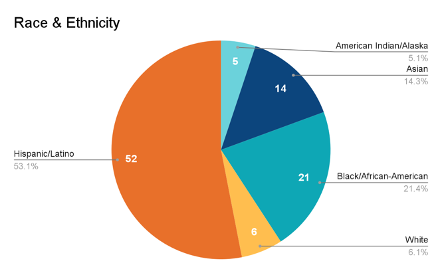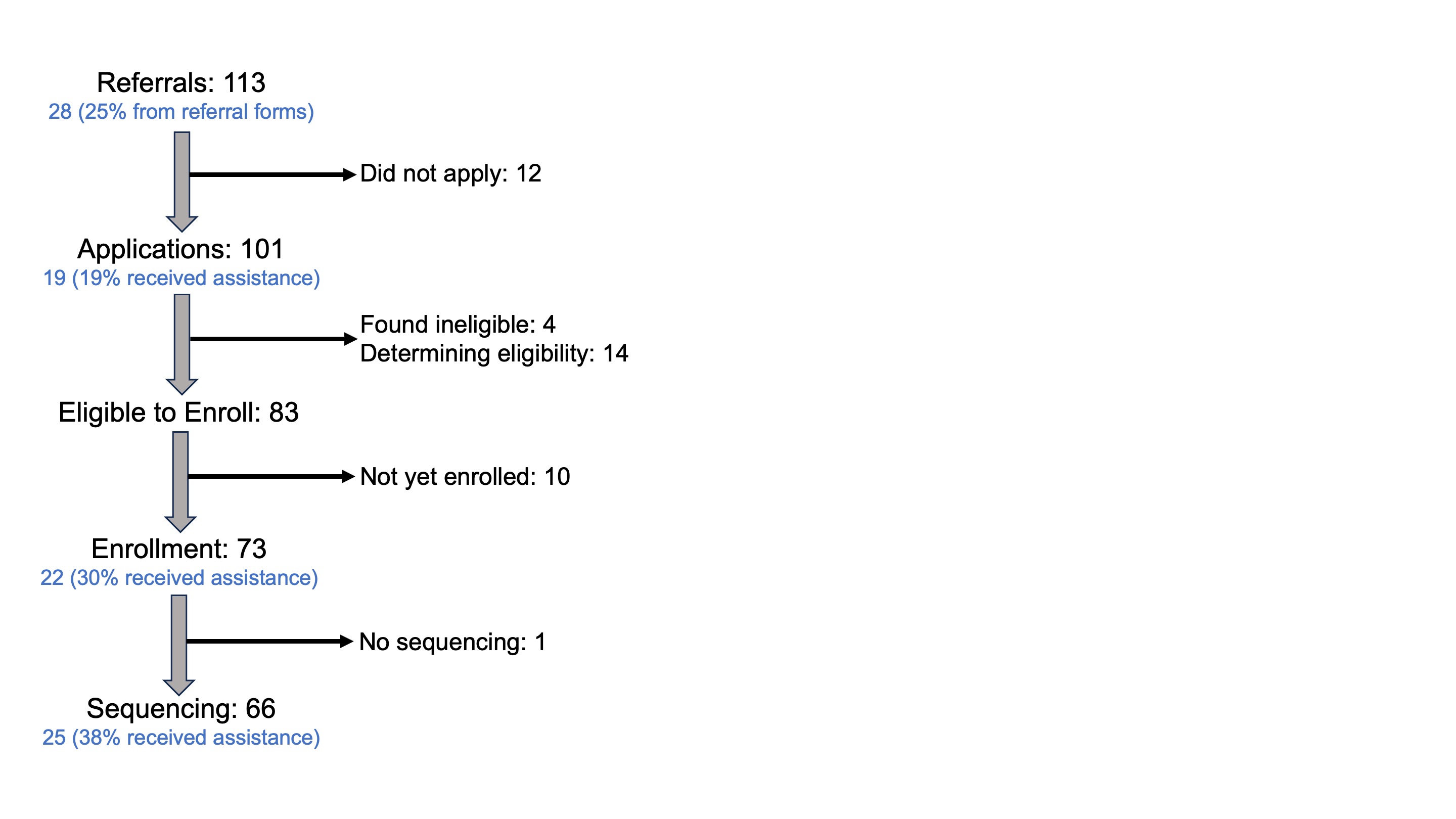Genomics/Epigenomics
Session: Genomics/Epigenomics
364 - Addressing inequity in rare disease genomics: preliminary findings from the Rare Genomes Project
Monday, May 6, 2024
9:30 AM - 11:30 AM ET
Poster Number: 364
Publication Number: 364.3044
Publication Number: 364.3044
- MW
Monica H. Wojcik, MD MPH FAAP FACMG
Attending Neonatologist and Geneticist
Boston Children's Hospital
Boston, Massachusetts, United States
Presenting Author(s)
Background: Effective strategies to address inequities in rare disease genomics remain incompletely understood. The Rare Genomes Project (RGP) is a genome sequencing (GS) study for participants with rare disease, intended to address barriers to genetic diagnosis. Despite this focus, we identified several categories of underrepresentation within our cohort: 1) non-white race; 2) Hispanic or Latino ethnicity; 3) limited English proficiency; 4) household income under the federal poverty line; 5) educational level of high school or less; and 6) primary residence in a rural area.
Objective: To address this, we incorporated equity-focused implementation science into the RGP protocol.
Design/Methods: We implemented a multi-faceted intervention which includes expanded outreach, enhanced non-English language support, proactive and flexible participant engagement, and use of mobile phlebotomy. Implementation outcomes were assessed via a mixed-methods approach.
Results: 113 potential participants have been referred to our study who identified within one of our categories of underrepresentation – 89 were underrepresented by race or ethnicity with breakdown displayed in Figure 1. Of these, 101/113 (89%) have applied and 83/101 (82%) were found to be eligible. Of the 83 eligible participants, 73/83 (88%) have enrolled, and 66/73 (90%) have returned samples for sequencing, with all processes ongoing. To facilitate this, 19/101 (19%) received assistance to apply to RGP, 22/73 participants (30%) received assistance to enroll, and 25/66 enrolled families (38%) received assistance to return samples for sequencing (Figure 2). This approach has resulted in a significant increase in the proportion of enrolled Hispanic/Latino participants from 8.8% to 13.7% (p = 0.046), with continued enrollment efforts and analyses of other categories of underrepresentation ongoing.
Conclusion(s): We describe a personalized, supportive approach for enrollment in a rare disease GS study, highlighting strategies enabling diversification of our study cohort. Our results suggest that enhanced support throughout the application and enrollment process is critical to expanding access. Future analyses are underway to further explore access barriers, motivations for participation, and outcomes after diagnosis for minoritized and underserved populations.


